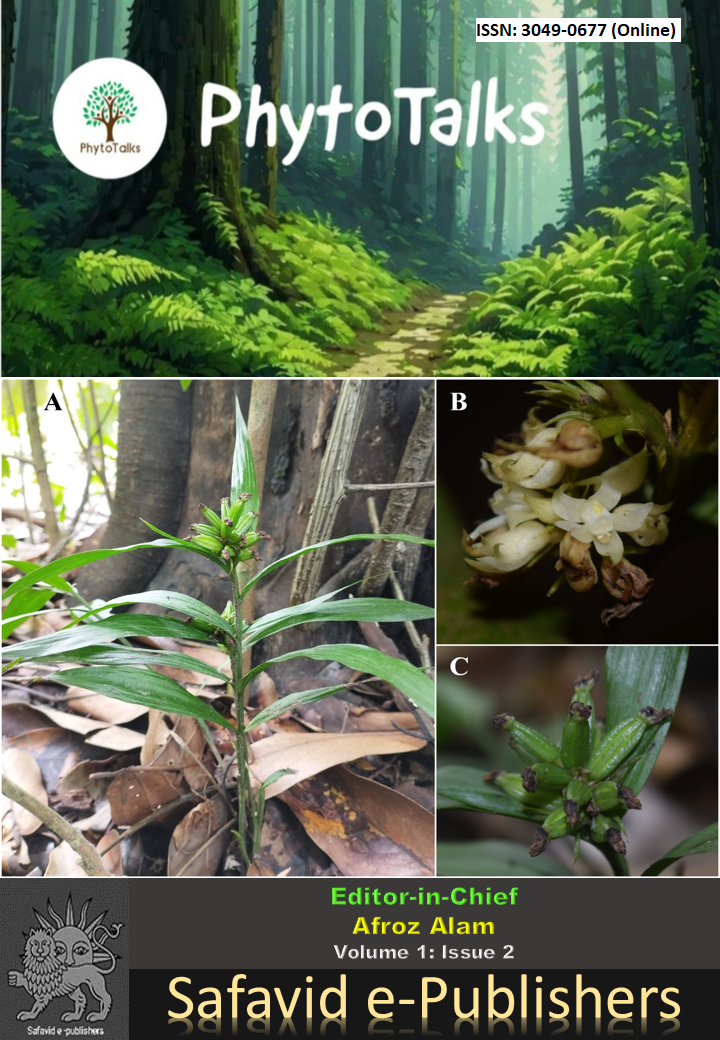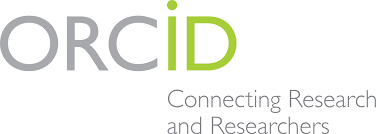Distribution, Taxonomy and Medicinal Importance of Solanum torvum Sw.
Importance of Solanum torvum Sw.
DOI:
https://doi.org/10.21276/pt.2024.1.2.2Keywords:
Sonaum torvum, Neuraceutical, medicinal properties, taxonomy, distribution, conservationAbstract
Solanum torvum Sw., commonly known as Wild Eggplant or Turkey Berry, is a plant species belonging to the family Solanaceae. This paper provides an overview of the distribution, taxonomy, and medicinal significance of S. torvum. The species is native to tropical regions of the Americas but has spread to various parts of the world, including Africa, Asia, and the Pacific Islands, where it often thrives in disturbed habitats. Taxonomically, S. torvum exhibits considerable morphological diversity with variations in leaf shape, flower colour, and fruit characteristics, which leads to the recognition of several intraspecific taxa. Wild eggplant has long been utilized in traditional medicine systems across its range for its diverse pharmacological properties. Various parts of the plant, including leaves, fruits, and roots, are used to treat a wide array of ailments, such as inflammation, infections, diabetes, hypertension, gastrointestinal disorders, etc. Phytochemical studies have revealed the presence of bioactive compounds such as alkaloids, flavonoids, phenolics, and sterols, which contribute to its medicinal properties. Additionally, S. torvum exhibits antioxidant, antimicrobial, antidiabetic, and anti-inflammatory activities, making it a valuable resource in the pharmaceutical and nutraceutical industries. However, despite its medicinal importance, there are concerns regarding the potential toxicity of certain compounds present in S. torvum necessitating further research to ensure its safe usage. Furthermore, habitat destruction and overexploitation pose threats to the wild populations of this species, highlighting the need for and importance of conservation efforts. Overall, understanding the distribution, taxonomy, and medicinal properties of S. torvum is crucial for harnessing its therapeutic potential while ensuring its sustainable utilization and conservation.
References
Ates DA, Turgay Ö. (2003). Antimicrobial activities of various medicinal and commercial plant extracts. Turk J Biol. 2003; 27(3):157–162. https://journals.tubitak.gov.tr/biology/vol27/iss3/6
Bussmann RW. Ethnobotany of the Samburu of Mt. Nyiru, South Turkana, Kenya. J Ethnobiol Ethnomed. 2006; 2(1), 1-10.
Mann A, Banso A, Clifford LC. An antifungal property of crude plant extracts from Anogeissus leiocarpus and Terminalia avicennioides. Tanzan J Health Res. 2008; 10(1):34-38. https://doi.org/10.4314/thrb.v10i1.14339.
Cowan MM. Plant products as antimicrobial agents. Clin Microbiol Rev. 1999; 12(4):564-582. https://doi.org/10.1128/cmr.12.4.564.
Hemalatha Hemalatha T, Kailasam Piramu. Phytochemical Screening in Solanum torvum Sw. and Murraya koenigii (L.) Spreng. Fruits. 2023; 47:179-186.
Cárdenas PD, Sonawane PD, Heinig U, Bocobza SE, Burdman S, Aharoni A. The bitter side of the nightshades: Genomics drives discovery in Solanaceae steroidal alkaloid metabolism. Phytochemistry. 2015; 113: 24-32. https://doi.org/10.1016/j.phytochem.2014.12.010
Little EL, Woodbury RO, Wadsworth FH. Trees of Puerto Rico and the Virgin Islands (No. 449). US Department of Agriculture, Forest Service. 1974.
Howard RA. Flora of the Lesser Antilles. Leeward and Windward Islands. Monocotyledoneae. Flora of the Lesser Antilles. Leeward and Windward Islands. Volume 3. Monocotyledoneae. 1979.
Ogwu MC, Dunkwu-Okafor A, Omakor IA, Izah SC. Turkey Berry (Solanum torvum Sw. [Solanaceae]): An Overview of the Phytochemical Constituents, Nutritional Characteristics, and Ethnomedicinal Values for Sustainability. In: Herbal Medicine Phytochemistry: Applications and Trends, 2023; 1-28. http://dx.doi.org/10.1007/978-3-031-21973-3_73-1
Mahapatra AK, Mishra S, Basak UC, Panda PC. Nutrient analysis of some selected wild edible fruits of deciduous forests of India: an explorative study towards non-conventional bio-nutrition. Adv J Food Sci Technol. 2012; 4(1), 15-21.
Anil Kumar VS, Maya Nair C, Murugan K. Pollen morphology of selected taxa of the genus Solanum from Southern Western Ghats, Kerala, India. Rheedea. 2015; 25(2): 128-145. https://dx.doi.org/10.22244/rheedea.2015.25.02.14
Abdulkadir AR, Nashriyah M, Hasan MM, Jahan MS. In vitro antioxidant activity of the ethanolic extract from fruit, stem, and leaf of Solanum torvum. Science Asia. 2016; 42(3), 184-189. http://dx.doi.org/10.2306/scienceasia1513-1874.2016.42.184.
Peter KV, Abraham Z. Biodiversity in horticultural crops, volume 1. Daya publishing house. 2007; ISBN (Hardback): 81-7035-490-0.
Bishnoi S. Solanum torvum Sw.: Towards development of a domestication strategy for the potential vegetable candidate crop Turkey berry (Solanum torvum Sw.) for commercial cultivation in India. 2019; http://dx.doi.org/10.13140/RG.2.2.16508.39040
Leung WTW, Butrum RR, Chang FH, Narayana Rao M, Polacchi W. Food composition table for use in East Asia. Food & Agriculture Org. 1972.
Arthan D, Svasti J, Kittakoop P, Pittayakhachonwut D, Tanticharoen M, Thebtaranonth Y. Antiviral isoflavonoid sulfate and steroidal glycosides from the fruits of Solanum torvum. Phytochemistry. 2002; 59(4): 459-463. https://doi.org/10.1016/S0031-9422(01)00417-4.
Lu Y, Luo J, Huang X, Kong L. Four new steroidal glycosides from Solanum torvum and their cytotoxic activities. Steroids. 2009; 74(1): 95-101. https://doi.org/10.1016/j.steroids.2008.09.011.
Yuan-Yuan LU, Jian-Guang LUO, Ling-Yi Kong. Chemical constituents from Solanum torvum. Chin J Nat Med. 2011; 9(1): 30-32. https://doi.org/10.1016/S1875-5364(11)60015-0.
Yousafa Z, Wanga Y, Baydounc E. Phytochemistry and pharmacological studies on Solanum torvum Swartz. J Appl Pharm Sci. 2013; 3(4): 152-160. http://dx.doi.org/10.7324/JAPS.2013.3428.
Ramamurthy CH, Kumar MS, Suyavaran VSA, Mareeswaran R, Thirunavukkarasu C. Evaluation of antioxidant, radical scavenging activity and polyphenolics profile in Solanum torvum L. fruits. J Food Sci. 2012; 77(8):C907-C913. https://doi.org/10.1111/j.1750-3841.2012.02830.x.
Kannan M, Dheeba B, Gurudevi S, Ranjit Singh AJA. Phytochemical, antibacterial and antioxident studies on medicinal plant Solanum torvum. J Pharm Res. 2012; 5(5): 2418-2421.
Balachandran C, Emi N, Arun Y, Yamamoto Y, Ahilan B, Sangeetha B, Perumal PT. In vitro anticancer activity of methyl caffeate isolated from Solanum torvum Swartz. fruit. Chem-Biol Interact. 2015; 242: 81-90. https://doi.org/10.1016/j.cbi.2015.09.023.
Shanthi D, Raja K, Saravanan R. Evaluation of cytotoxicity and anti-cancer activity of Solanum torvum stem extract on normal Vero and human breast cancer MCF-7 cell line. Uttar Pradesh Journal of Zoology. 42(9):50–59. https://mbimph.com/index.php/UPJOZ/article/view/2111
Chah KF, Muko KN, Oboegbulem SI. Antimicrobial activity of methanolic extract of Solanum torvum fruit. Fitoterapia. 2000; 71(2): 187-189. https://doi.org/10.1016/S0367-326X(99)00139-2.
Bari MA, Islam W, Khan AR, Abul Mandal AM. Antibacterial and antifungal activity of Solanum torvum (Solanaceae). Int J Agri Biol. 2010; 12: 386-390.
Kaunda JS, Zhang YJ. The genus Solanum: an ethnopharmacological, phytochemical and biological properties review. Nat Products Bioprospect. 2019; 9(2): 77-137. https://doi.org/10.1007/s13659-019-0201-6.
Obiang CS, Misso RLNM, Atome GRN, Ondo JP, Engonga LCO, Emvo EN. Phytochemical analyses, antimicrobial and antioxidant activities of stem bark extracts of Distemonanthus benthamianus H. Baill. and fruit extracts of Solanum torvum Sw. from Gabon. Asian Pac J Trop Biomed. 2019; 9(5):209-216. https://doi.org/10.4103/2221-1691.259001.
Ndebia EJ, Kamgang R, Nkeh-ChungagAnye BN. Analgesic and anti-inflammatory properties of aqueous extract from leaves of Solanum torvum (Solanaceae). Afr J Tradit Complement Altern Med. 2007; 4(2): 240-244. https://doi.org/10.4314/ajtcam.v4i2.31214.
Mahanta B. Effect of Solanum torvum Sw. methanolic extract on in-vitro and in-vivo Models of Inflammation. IJPSR, 2023; 14(2): 912-919.
Re R, Pellegrini N, Proteggente A, Pannala A, Yang M, Rice-Evans C. Antioxidant activity applying an improved ABTS radical cation decolorization assay. Free Radic Biol Med. 1999; 26(9-10): 1231-1237. https://doi.org/10.1016/S0891-5849(98)00315-3.
Mohan M, Kamble S, Gadhi P, Kasture, S. Protective effect of Solanum torvum on doxorubicin-induced nephrotoxicity in rats. Food Chem Toxicol. 2010; 48(1), 436–440. https://doi.org/10.1016/j.fct.2009.10.042
Nguelefack TB, Mekhfi H, Dimo T, Afkir S, Nguelefack-Mbuyo EP, Legssyer A, Ziyyat A. Cardiovascular and anti-platelet aggregation activities of extracts from Solanum torvum (Solanaceae) fruits in rat. J Altern Complement Med. 2008; 5(1):1-11. https://doi.org/10.2202/1553-3840.1105.
Fui LH. Knowledge and use of forest product as traditional medicine: the case of the forest-dwelling communities. 2012; Int J Pharmacy Biol Sci. 3(4):104–111.
Nguelefack TB, Feumebo CB, Ateufack G, Watcho P, Tatsimo S, Atsamo AD, Kamanyi, A. Anti-ulcerogenic properties of the aqueous and methanol extracts from the leaves of Solanum torvum Swartz (Solanaceae) in rats. J Ethnopharmacol. 2008; 119(1):135-140. https://doi.org/10.1016/j.jep.2008.06.008.
Mendes AP, Borges RS, Neto AMC, de Macedo LG, da Silva AB. The basic antioxidant structure for flavonoid derivatives. J Mol Model. 2012; 18:4073-4080. https://doi.org/10.1007/s00894-012-1397-0
https://www.cabidigitallibrary.org/doi/10.1079/cabicompendium.50559
De Souza GR, De-Oliveira ACAX, Soares V, De-Souza TP, Barbi NS, Paumgartten FJR, Da Silva AJR. Protective effects of a chemically characterized extract from Solanum torvum leaves on acetaminophen-induced liver injury. Drug Chem Toxicol. 2023; 46(1), 122-135. https://doi.org/10.1080/01480545.2021.2012905
Satyanarayana N, Chinni SV, Gobinath R, Sunitha P, Sankar AU, Muthuvenkatachalam BS. Antidiabetic activity of Solanum torvum fruit extract in streptozotocin-induced diabetic rats. Front Nutr. 2022; 9, 987552. https://doi.org/10.3389/fnut.2022.987552
Gandhi GR, Ignacimuthu S, Paulraj MG. Solanum torvum Swartz. fruit containing phenolic compounds shows antidiabetic and antioxidant effects in streptozotocin induced diabetic rats. Food Chem Toxicol. 2011; 49(11), 2725-2733. https://doi.org/j.fct.2011.08.005
Gandhi GR, Ignacimuthu S, Paulraj MG, Sasikumar P. Antihyperglycemic activity and antidiabetic effect of methyl caffeate isolated from Solanum torvum Swartz. fruit in streptozotocin induced diabetic rats. Eur J Pharmacol. 2011; 670(2-3), 623-631. https://doi.org/10.1016/j.ejphar.2011.09.159
Sani S, Lawal B, Ejeje JN, Aliu TB, Onikanni AS, Uchewa OO, Ovoh JC, Ekpa FU, Ozoagu CD, Akuma TS, Onyeji SC, Obialor A, Alotaibi SS, Albogami SM, De Waard M, Batiha GE, Huang TH, Wu ATH. Biochemical and tissue physiopathological evaluation of the preclinical efficacy of Solanum torvum Swartz leaves for treating oxidative impairment in rats administered a β-cell-toxicant (STZ). Biomed Pharmacother. 2022; 154, 113605. https://doi.org/10.1016/j.biopha.2022.113605
Mohan M, Kamble S, Gadhi P, Kasture P. Protective effect of Solanum torvum on doxorubicin-induced nephrotoxicity in rats. Food Chem Toxicol. 2010; 48:436-440. https://doi.org/10.1016/j.fct.2009.10.042
Kadam V, Gangurde S, Mohan M. Protective effect of Solanum torvum on monosodium glutamate-induced hepatotoxicity and nephrotoxicity. Indian J Nat Prod Resour. 2019; 10(1):31-42. https://doi.org/10.56042/ijnpr.v10i1.19023
Aljabri M, Alharbi K, Alonazi M. In vitro and in silico analysis of Solanum torvum fruit and methyl caffeate interaction with cholinesterases. Saudi J Biol Sci. 2023; 30(10): 103815. https://doi.org/10.1016/j.sjbs.2023.103815
Mohan M, Gangurde S, Kadam V. Protective effect of Solanum torvum on monosodium glutamate-induced neurotoxicity in mice. Indian J Nat Prod Resour. 2017; 8(4): 351-359. https://doi.org/10.56042/ijnpr.v8i4.16551
Published
Versions
- 2025-01-29 (3)
- 2024-09-26 (2)
- 2024-07-30 (1)
Issue
Section
License
Copyright (c) 2024 PhytoTalks

This work is licensed under a Creative Commons Attribution-NonCommercial 4.0 International License.
Copyright and License Terms
Authors who publish with this journal agree to the following terms:
- Authors retain the copyright to their work and grant the journal the right of first publication. The work is simultaneously licensed under a Creative Commons Attribution License permitting others to share it with proper acknowledgement of the authorship and its original publication in this journal.
- Authors may enter into additional, non-exclusive agreements for distributing the published version of their work (e.g., depositing it in an institutional repository or including it in a book), provided they acknowledge that the work was first published in this journal.
Open Access Policy
License
PhytoTalks is an open-access journal, allowing readers to access all published articles without registration. All articles are distributed under the Creative Commons Attribution License (CC Attribution 4.0), which permits unrestricted use, distribution, and reproduction in any medium, provided the original author and source are properly credited. (https://creativecommons.org/licenses/by/4.0/).
License summary:
This license allows others to:
-
Share — copy and redistribute the material in any medium or format
-
Adapt — remix, transform, and build upon the material for any purpose, even commercially
Under the following terms: -
Attribution — appropriate credit must be given, a link to the license provided, and indication if changes were made.
Author Warranties
By submitting a manuscript to PhytoTalks, authors confirm that:
-
The work is original and does not infringe any copyright, trademark, patent, or other rights of third parties.
-
The work has not been published elsewhere (except as a preprint) and is not under consideration by another publication.
-
All necessary permissions for any third-party materials used in the manuscript have been obtained.
Citation Policy
When using or citing articles from PhytoTalks, proper attribution must be given to the original authors and the source, including a DOI link where available.


![Announcement: Special Conference Issue of Phytotalks We are pleased to announce that Phytotalks will publish a special issue featuring select peer-reviewed papers from the Third International Conference on Plant Functional Biology, an esteemed international gathering of experts in Plant Science]. This special issue will highlight cutting-edge research and innovative developments presented at the conference, offering our readers valuable insights into the latest advancements in the field. Stay tuned for this upcoming edition, which reflects our continued commitment to showcasing high-quality, impactful research.](https://phytotalks.com/public/site/images/afrozalam/img-20250701-wa0010.jpg)



































